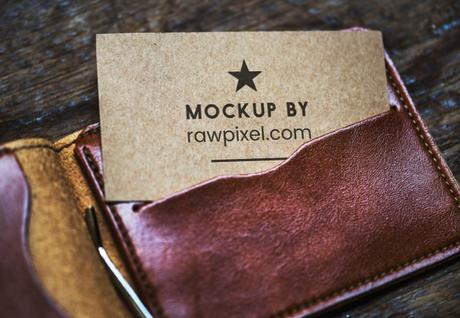While the internet was burgeoning and the online landscape was creating new ways for people to communicate digitally, many thought that the use of tactile means for promoting oneself would go the way of the dodo. For a while, it seemed like business cards might go out of fashion and become redundant in a tech world.

However, never has a well-designed business card been more relevant and useful than in today's entrepreneurial landscape. Make a forgettable business card, and it'll join food wrappers and pencil shavings in the trash can. Conversely, if you present a potential business associate with a chic card, you could be bringing about the beginning of a fruitful partnership.
Why You Need Quality Business Cards
Making a good first impression is essential in all interpersonal relationships, including business interactions. A crafty business card shows that you took the time and effort to create an item that combines art and design to showcase yourself.
Equally as important is the fact that a business card includes essential contact information you want the person you are giving it to know about you. A quality business card guarantees that this information will remain at their disposal and at the forefront of their mind for as long as possible.
How Important is Branding?
Having a quality product or offering a high-level service means very little to the market if it is not accompanied by a strong brand. Branding is what sets you apart from your competition and leaves a favorable impression on potential consumers.
The longevity of a business and the sustainability of its growth depends on the ability of a company to build and maintain a potent brand. In most cases, branding can mean the difference between the success or failure of a business.
What it Takes to Create a Brand
Building a presence in any market requires you to understand the concept of brand. Creating a brand includes a lot of intangibles, such as capturing your audience's emotions or evoking a certain kind of response in people when they see or think of your company's products or services.
These intangibles are built by following a few steps that are very much tangible and actionable. Not every brand is built the same way, but most share a core set of steps.
1. Research Your Target Audience and Competition
As mentioned earlier, the main objective in brand-building is standing out in the sea of available product or service providers in your space. The way to accomplish this is to know your target market. Research your audience and find out what makes them tick in relation to your niche. Take a thorough look at your competition and make a choice as to how you will want to differentiate your company.
2. Determine Your Personality
A brand isn't limited to the features and benefits of your products or the quality of service you provide. If you center your image around customer satisfaction, product innovation, or any other value, be sure to make it abundantly clear in your branding. Your brand's personality is something that will follow your brand all the way to your business cards.
3. Choose the Look of Your Brand
Deciding on your brand's colors and logos is the last step before creating any promotional material. You can determine this part of your company's image in-house or employ the help of an experienced agency.
Tips From Successful Entrepreneurs and Leaders
Looking at business cards from some of the biggest names in their respective fields, it is apparent that there are a few commonalities. Most business leaders use an elegant design that gives their business card a formal appearance that is eye-catching nonetheless.
A common trait in business cards of people such as Bill Gates, Meg Whitman and John Donohoe is that they place their signatures on their cards in an exquisite and prevalent way.
Some business personalities elect the use of humor or over-the-top designs, which may work for them but backfire for others. Mark Zuckerberg, for instance, uses a word in jest that will not be repeated here while Jerry Yang refers to himself as Chief Yahoo; a title that only works for the former CEO of the well-known tech company of the same name.
If you want to have a business card that attracts attention for all the right reasons and be a business deal magnet, consider consulting a branding professional. A third party may be able to give you a fresh take on your brand and give you effective design ideas that can take your brand image to the next level.
